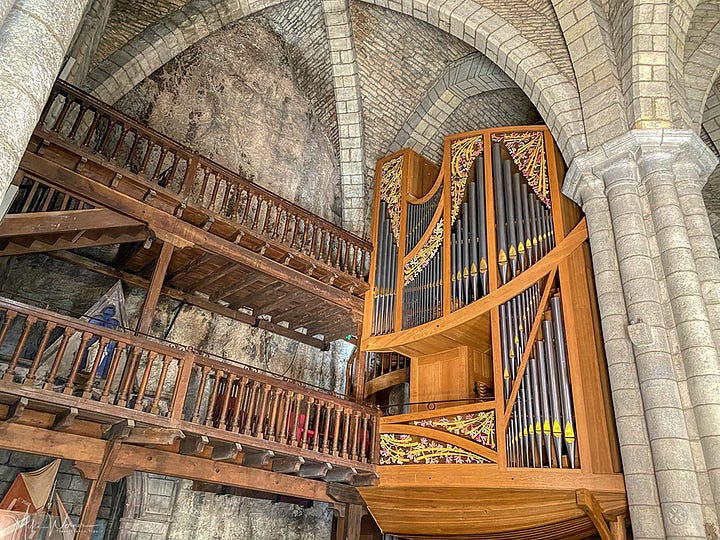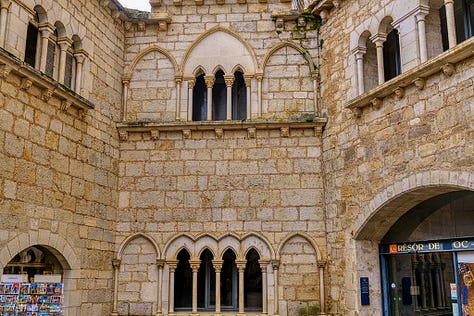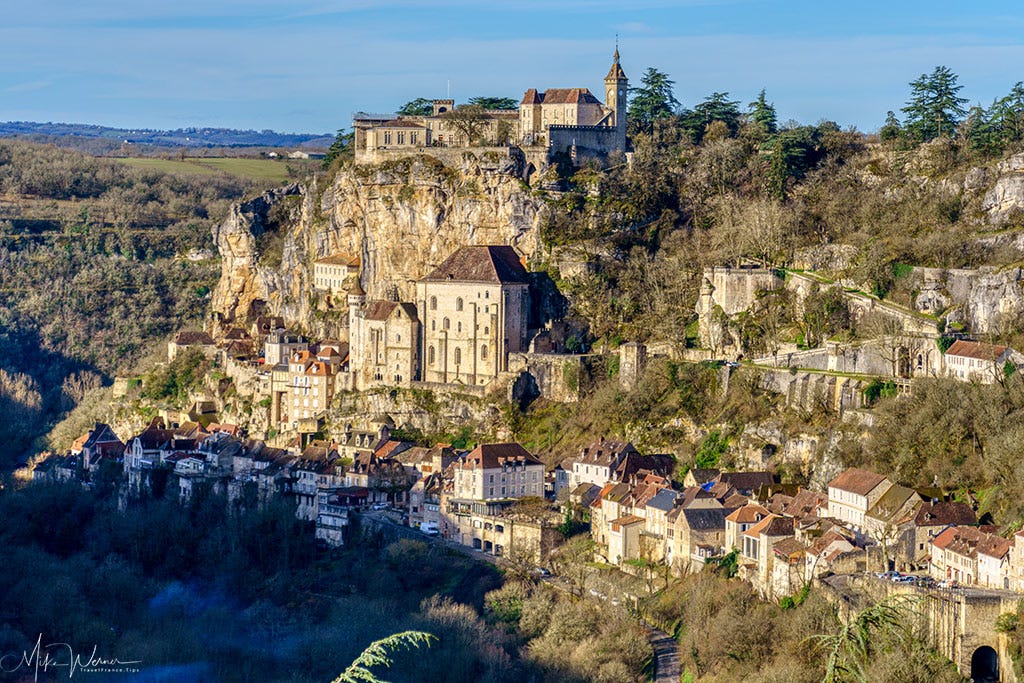Rocamadour is a medieval pilgrimage site and village located in southwestern France, in the region of Occitanie. The village is situated on the side of a cliff, overlooking the Alzou River and is known for its stunning views, rich history, and religious significance.
Click here to see where Rocamadour is located on Google Maps
Here are some of the things to know about Rocamadour:
History
Rocamadour dates back to the 12th century and was an important pilgrimage site during the Middle Ages. According to legend, the village was named after Saint Amadour, a hermit who is said to have lived in a nearby cave. It was believed that his tomb contained relics that had miraculous healing powers, and the village became an important destination for pilgrims seeking cures for their ailments.
Architecture
One of the most striking features of Rocamadour is its unique architecture. The village is built into the side of a cliff, with buildings and chapels stacked on top of each other.





The most famous of these chapels is the Chapelle Notre-Dame, which is home to a Black Madonna statue that is said to have been carved by Saint Amadour himself.
Religious Significance
Rocamadour is still an important pilgrimage site today and attracts thousands of visitors each year. The village is particularly popular with Catholics, who come to pray at the Chapelle Notre-Dame and other religious sites in the village.




You will find more information and photos a little bit further down in this article.
Surrounding Area
In addition to the village itself, Rocamadour is surrounded by beautiful countryside and is a great place to explore the outdoors. Visitors can hike along the Alzou River, explore nearby caves and grottos, or take a scenic drive through the nearby hills and valleys.





The Village
Rocamadour is a small village with a population of around 600 people. The village is situated on the side of a cliff, overlooking the Alzou River. The village is divided into three parts: the lower town, the middle town, and the upper town.
The Lower Part








The lower town is where most visitors enter the village, and is home to a number of restaurants, souvenir shops, and other tourist attractions. This is where you will find the town hall (“Mairie” or “Hotel de Ville”), the tourist office and a few hotels.
The Middle Part








The middle town is where the majority of the religious sites are located, including the Chapelle Notre-Dame, the Saint-Sauveur Basilica, and the Saint-Michel Chapel.
The Upper Part





The upper town is the smallest of the three and is home to the Castle of Rocamadour. The castle dates back to the 12th century and was originally built as a fortress to defend the village against invading forces. Over the centuries, it was expanded and renovated several times, with the most significant modifications taking place in the 14th century when the castle was converted into a residence for the bishops of Cahors.
The castle has a rectangular shape and is surrounded by thick walls with towers at each corner. It has several rooms that visitors can explore, including the Great Hall, which was used for banquets and other large gatherings, and the Bishop's Chapel, which features beautiful frescoes and stained glass windows.
In addition to its historical significance, the Castle of Rocamadour is also known for its role in local legends and folklore. One legend tells the story of how a young girl saved the castle from destruction by the devil. According to the legend, the devil promised to leave the village alone if he could have the first soul to cross the bridge over the Alzou River. The young girl outsmarted the devil by sending a goat across the bridge instead of a human, saving the village and the castle.
Today, the Castle of Rocamadour is a popular tourist attraction and is open to visitors year-round. Guided tours are available, and visitors can learn about the history and legends of the castle while enjoying its stunning views and picturesque setting.
TIP: To get into the castle, you will need a €2 (euro) coin, since there is only a turnstyle to pass through. No coin, no visit!
Next to the castle, you will find a more modern 2 story building used to host pilgrims (mostly for the Camino de Santiago de Compostela, better known as the Saint James way). It is quite active all year round.
Going Between Levels
To go between the levels, there are two different way. The first one is by using a well defined hiking/walking path, called the Chemin de la Croix (in English, the road of the cross). It quite easy to take, especially downhill. Upwards can be a challenge for those that are not fit.
The second way is easier, but it’s not free; there are two elevators (lifts). The first one goes from the Upper Level to the Middle Level. The second one goes from the Middle Level to the Lower Level.



The interesting thing about these lifts is that they have been excavated into the mountain. The shaft is inside the mountain, and the lifts travel at an angle.
Tip
You have the option to spend the night at a hotel located within Rocamadour, allowing you to rest right in the heart of the town. While this has its appeal, we suggest considering accommodations slightly farther away. By choosing a hotel on the higher edge of the hill near the ancient pilgrims' hospital, you'll still be in Rocamadour but with the added advantage of a stunning view, particularly at night. Plus, you'll be able to reach the upper part of the village in just 15 minutes on foot.
We highly recommend the Logis Hotel le Belvedere.
Conclusion
Overall, Rocamadour is a fascinating and beautiful destination that offers a rich blend of history, religion, and natural beauty. Whether you are a history buff, a religious pilgrim, or simply someone who enjoys stunning scenery and delicious food, Rocamadour is definitely worth a visit.











